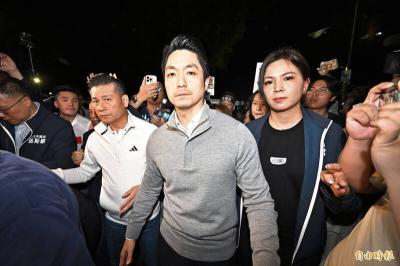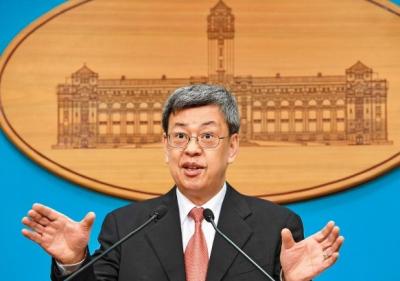Aboriginal lawmakers yesterday called for the redrawing of Aboriginal electoral districts to better reflect regional differences and ethnic diversity.
“Aboriginal voters elect three mountains Aboriginal lawmakers and three plains Aboriginal lawmakers, who represent all Aborigines across the country,” said People First Party Legislator Lin Cheng-er (林正二) of the Amis tribe, during an Internal Administration Committee meeting yesterday morning.
Under the system, six Aboriginal legislators represent all 500,000 Aborigines nationwide.
“So, when we run for legislative seats, it’s like running for the presidency, because our electoral district covers the entire country,” Lin said.
Such a large “electoral district” makes it difficult not only for candidates to campaign, but also to serve their constituents once elected.
“Maybe the Aboriginal electoral district could be cut into half, with one northern district and one southern district, both covering about nine to 11 counties and cities,” he said.
Lin said that among the three plains Aboriginal seats, one should be reserved for a non-Amis representative, since the Amis is the most populous plains Aboriginal tribe, and usually occupy all plains Aboriginal seats in the legislature.
“With more than 180,000 people — or two-thirds of all plains Aborigines — it’s often we Amis who occupy plains Aboriginal seats,” he said. “It’s not very fair to non-Amis tribes.”
In the legislative election in January, “all 10 plains Aboriginal candidates were Amis, because politicians from other plains Aboriginal tribes knew they would not get elected and thus gave up running,” he said.
Under the current electoral system, Aboriginal voters are divided into “mountains Aborigines” and “plains Aborigines,” and each category elects three representatives.
Although the term “mountains Aborigines” refers mainly to Aboriginal tribes living in the mountains, while “plains Aborigines” refers mainly to tribes living on the plains, the description is not entirely accurate, since the definition was based more on some complicated historical reasons.
Mountains Aboriginal tribes include the Atayal, Sediq, Truku, Bunun, Tsou, Paiwan, Rukai and Saisiyat in Miaoli County’s Nanjhuang Township (南庄) — also known as “southern Saisiyat” — and Tao, who live on Lanyu (蘭嶼), or Orchid Island, in the Pacific.
Plains Aboriginal tribes include the Amis, Sakizaya, Kavalan, Thao, Puyuma and Saisiyat in Hsinchu County’s Wufeng Township (五峰), also known as “northern Saisiyat.”
Chinese Nationalist Party (KMT) Legislator Chien Tung-ming (簡東明) of the Paiwan tribe agreed on the need to redraw Aboriginal electoral districts, but said dividing Aboriginal electoral districts into three — northern, central and southern — was more appropriate.
Deputy Minister of the Interior Chien Tai-lang (簡太郎) and Central Election Commission Vice Chairman Liu I-chou (劉義周) both said that they would consider the suggestions.

Several Chinese Nationalist Party (KMT) officials including Chairman Eric Chu (朱立倫) are to be summoned for questioning and then transferred to prosecutors for holding an illegal assembly in Taipei last night, the Taipei Police said today. Chu and two others hosted an illegal assembly and are to be requested to explain their actions, the Taipei City Police Department's Zhongzheng (中正) First Precinct said, referring to a protest held after Huang Lu Chin-ju (黃呂錦茹), KMT Taipei's chapter director, and several other KMT staffers were questioned for alleged signature forgery in recall petitions against Democratic Progressive Party (DPP) legislators. Taipei prosecutors had filed

Taiwan would welcome the return of Honduras as a diplomatic ally if its next president decides to make such a move, Minister of Foreign Affairs Lin Chia-lung (林佳龍) said yesterday. “Of course, we would welcome Honduras if they want to restore diplomatic ties with Taiwan after their elections,” Lin said at a meeting of the legislature’s Foreign Affairs and National Defense Committee, when asked to comment on statements made by two of the three Honduran presidential candidates during the presidential campaign in the Central American country. Taiwan is paying close attention to the region as a whole in the wake of a

President William Lai (賴清德) has appointed former vice president Chen Chien-jen (陳建仁) to attend the late Pope Francis’ funeral at the Vatican City on Saturday on his behalf, the Ministry of Foreign Affairs said today. The Holy See announced Francis’ funeral would take place on Saturday at 10am in St Peter’s Square. The ministry expressed condolences over Francis’ passing and said that Chen would represent Taiwan at the funeral and offer condolences in person. Taiwan and the Vatican have a long-standing and close diplomatic relationship, the ministry said. Both sides agreed to have Chen represent Taiwan at the funeral, given his Catholic identity and

NEW WORLD: Taiwan is pursuing innovative approaches to international relations through economics, trade and values-based diplomacy, the foreign minister said Taiwan would implement a “three-chain strategy” that promotes democratic values in response to US tariffs, Minister of Foreign Affairs Lin Chia-lung (林佳龍) said. Taiwan would aim to create a “global democratic value chain,” seek to capitalize on its position within the first island chain and promote a “non-red supply chain,” Lin was quoted as saying in the ministry’s written report to the Legislative Yuan submitted ahead of the legislature’s Foreign Affairs and National Defense Committee meeting slated for today. The Ministry would also uphold a spirit of mutual beneficial collaboration, maintaining close communication and consultations with Washington to show that Taiwan-US cooperation